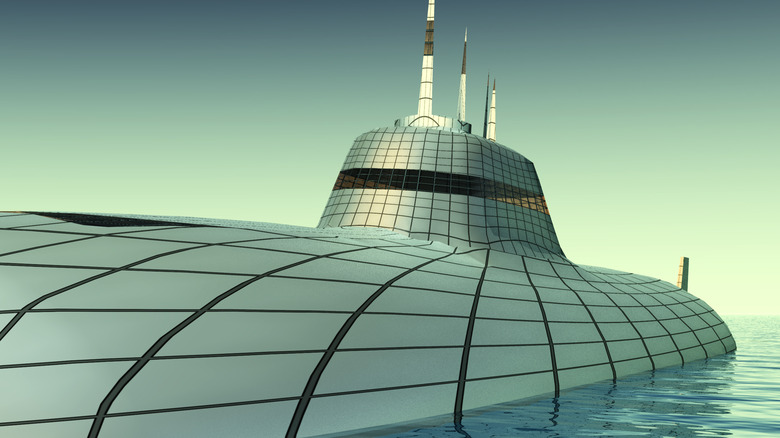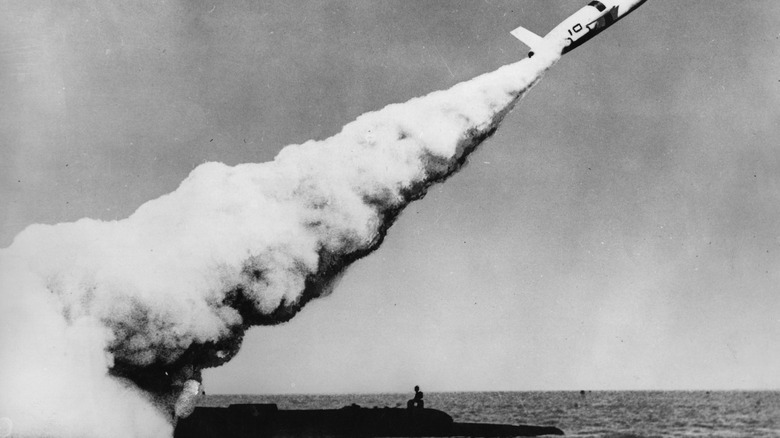The Ingenious Submarine Designed To Carry Planes Deep Underwater For Strategic Missions
The US Navy is no stranger to advanced aircraft carriers. The US operates 11 active aircraft carriers today, which is more than a quarter of all aircraft carriers worldwide, and more are currently on order. It would seem then that the US Navy has this whole aircraft carrier thing pretty well figured out, but that wasn't always the case.
Aircraft carriers were first used in battle during the First World War. The HMS Furious, a British vessel powered by water-tube boilers, launched seven biplane fighters from the North Sea in an assault against German Zeppelins — which reads closer to a steampunk fever dream than a historical fact — in 1918. The event did not go unnoticed by US naval officers, who immediately started experimenting with aircraft carrying ships of their own. In 1922, the first US aircraft carrier, the USS Langley, was commissioned, and it remained in active service into the Second World War. It was ultimately sunk after being attacked by Japanese aircraft off the coast of Java in 1942.
Those early-adopting officers were correct in their assessment of aircraft carriers, which went on to play a pivotal role in WWII but remain integral to US military strategy now more than a century later. In all of that history lies buried an audacious aircraft carrier concept that's almost too fantastical to believe: the AN-1 submarine aircraft carrier. Let's dive into the details (pun unapologetically intended).
A different meaning for 'surface to air'
A few things changed in the decade or so after the Langley was destroyed. Nuclear weapons were invented, for one. The Cold War got underway, and these weapons found their way onto turbojet-powered cruise missiles like the Regulus. Along with nuclear weapons came nuclear power, which could allow a submarine essentially infinite fuel and range when compared to their diesel-electric counterparts.
These varying pieces of technology came together in the form of the USS Halibut, a nuclear-powered submarine that carried up to five Regulus missiles. The missiles themselves were limited to a range of about 1,000 miles though, and there are a lot of inland targets more than 1,000 miles from open water.
However, it didn't take long for the Navy to notice that the Regulus missiles were roughly the same size as a fighter aircraft. So, at least in theory, if the Halibut could carry one, it could carry the other. Engineers began work on the AN-1, a submarine that would have two internal hangers housing a total of eight fighters. The ship would surface for the fighters to launch, and they would do so vertically, pointing straight up, and all eight could be launched in under eight minutes.
In the end, the AN-1 was never built. In addition to advances in ballistic missile technology that quickly made the idea obsolete, the design relied on pilots performing vertical landings — noses to the sky! — a technique that only recently has become feasible with modern technology. In retrospect, maybe it would have been easier to make the aircraft themselves submersible.

